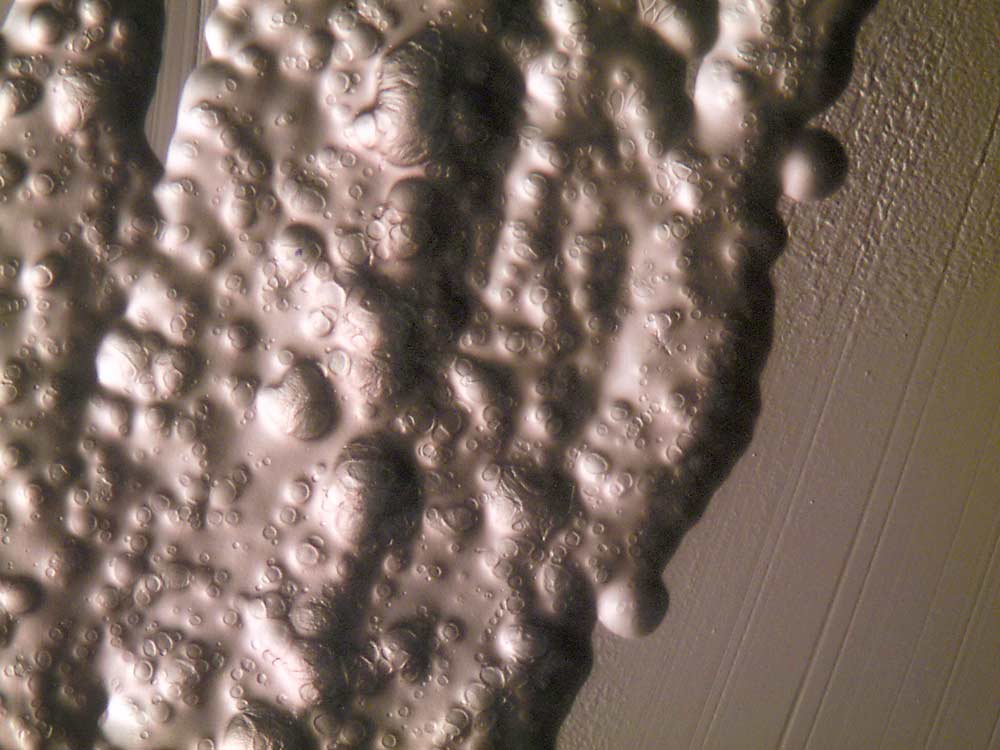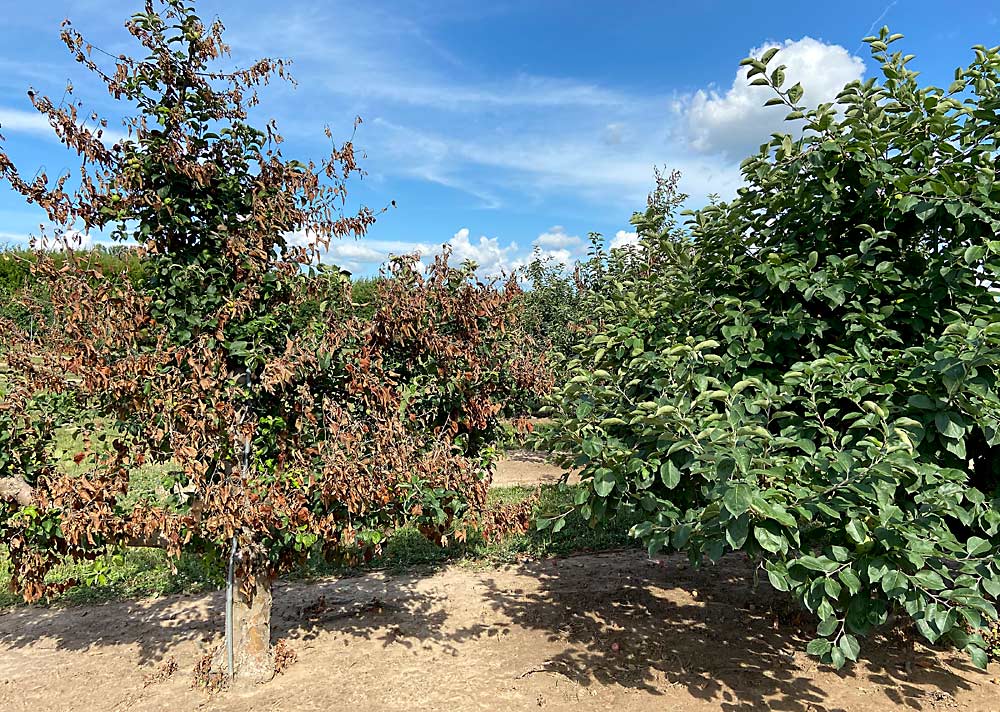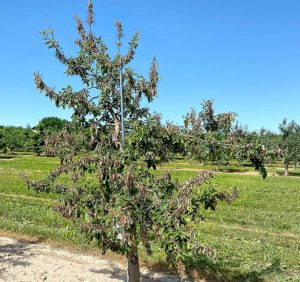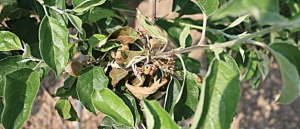
More frequent fire blight flare-ups have New York growers looking for answers. They can find them in Michigan.
Widespread outbreaks of the destructive disease have hit New York’s major apple-growing regions more frequently in the last decade, and a streptomycin-resistant strain keeps cropping up in isolated orchards. These might be relatively new and somewhat alarming events for Empire State growers, but growers in the Great Lakes State are used to it.
Cornell University researchers and industry consultants have advised New York growers to spray for fire blight more consistently — a lesson Michigan growers, with their longer history of widespread outbreaks, learned a couple of decades ago.
“Most (Michigan) growers in the last 20 years have had at least some situation where fire blight hit some trees hard out of nowhere,” Michigan State University pathologist George Sundin said. “They know how fast things can pop up.”
A major fire blight outbreak hit Southwest Michigan in 2000, killing hundreds of thousands of trees. With today’s higher-density orchards and more susceptible commercial varieties, an outbreak of that magnitude could do even more economic damage. Sundin has spent years expecting another widespread outbreak, but Michigan has avoided it so far. Credit goes in part to grower vigilance and in part to just plain lucky weather; it takes a warm, wet, windy bloom period to kindle a major fire blight epidemic, he said.
New York has not been so lucky. In recent years, temperatures have been known to jump from roughly 50 degrees to 90 degrees Fahrenheit during petal fall, when there is active shoot growth, with heavy rainstorms following — perfect conditions for a fire blight outbreak, said Cornell University professor Kerik Cox.
Vigorous rootstocks and susceptible varieties contribute to the intensity of outbreaks, and New York growers have learned that they can’t let their guard down anymore. Cox tells them to save their antibiotic “hammers” for late bloom, when fire blight pressure is heaviest.
If they’re using streptomycin, however, they need to keep an eye out for the resistant strain.
MSU apple production specialist Anna Wallis said streptomycin resistance poses a much more common problem in Michigan, to the point where Michigan growers often assume there’s resistance until tests prove otherwise.
Wallis, who earned her doctorate studying fire blight at Cornell, has experience in both states and was one of the researchers who helped identify the streptomycin-resistant strain in New York orchards.

Cox said the strain was first found in New York in 2002. Growers and researchers thought they had eradicated it but found it again in 2011 and 2018. It has appeared periodically ever since. The strep-resistant strain, named 41:23:38, is now entrenched in Western New York and has been found in nearly all the research blocks at Cornell AgriTech in Geneva.
Based on previous research, it’s likely 41:23:38 moves around in budwood.
“We don’t know if that’s how it’s actually being transported, but unless there’s a monster running around spreading fire blight, that’s our best working hypothesis,” Cox said.
The strain lays quiescent in the nursery, but it awakens the moment a grower plants the tree and starts pushing it to the top wire. Fortunately, 41:23:38 is not the most aggressive strain of fire blight, and it can be killed with alternative antibiotics such as kasugamycin, to which there are no strains that have resistance, he said.
Sundin said a high percentage of fire blight strains in Michigan are resistant to streptomycin. Growers there have learned to proactively treat for shoot blight, as well as blossom blight, and to diligently time their bloom sprays. Though they still use streptomycin in certain situations, increasing resistance has forced them to rely more on kasugamycin, which is expensive.
Wallis said orchards in greater Grand Rapids — Michigan’s main apple-growing region — are more adjacent to each other, whereas New York farms are more isolated. The closer orchards are to each other, the more easily fire blight can spread.
“You don’t want to give fire blight to your neighbor, and you don’t want to get fire blight from your neighbor,” Sundin said.
A mix of propitious weather and grower vigilance has kept fire blight at bay in Michigan, but if conditions favor an outbreak, even strict control measures can’t stop it.
“The problem with fire blight is that you can do everything right and still have a huge outbreak,” Sundin said. “It’s difficult to hold the disease down once it gets going.”
—by Matt Milkovich








Leave A Comment